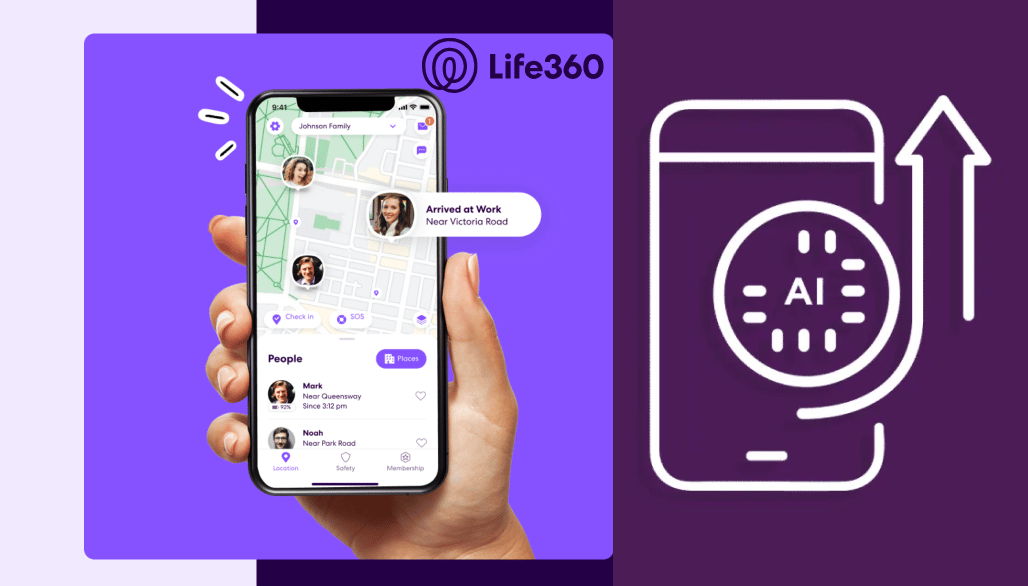- ailoitte.ai - The Applicable AI newsletter
- Posts
- Beyond Life360: AI-Powered Family Safety for the Next Generation
Beyond Life360: AI-Powered Family Safety for the Next Generation
Supercharge Your App with Intelligent Features Users Actually Want

In today's digital age, families crave peace of mind. Location-sharing apps like Life360 offer a solution, but is that enough?
While knowing your loved one's whereabouts provides a basic level of comfort, imagine an app that anticipates their needs, predicts potential threats, and offers personalized safety insights. This is the power of Artificial Intelligence (AI).
Here, being an AI Solution Architect, I’ve shared innovative AI features that can elevate your family safety app, setting it apart from the competition and attracting users who demand a truly comprehensive approach to safety.
We'll focus on actionable strategies, making this a valuable resource for app developers and entrepreneurs looking to build superior safety solutions.
Our Objective:
Beyond Basic Location Tracking
Current family safety apps typically rely on passive location sharing and basic alerts.
This reactive approach leaves a gap in proactive safety measures. AI, however, unlocks a new level of sophistication.
By analyzing data and anticipating scenarios, AI empowers you to create a proactive, predictive, and personalized safety experience for families.
AI-Powered Features to Attract Users:
Predictive Location & Arrival Times
Parent Pain Point: Constant check-ins and anxieties about when loved ones will arrive home.
AI Improvement: Implement AI-powered location prediction. The app analyzes historical movement patterns, calendar events, and real-time data like traffic and weather to predict future locations and arrival times.
Use Case: Instead of endless "are you there yet?" texts, the app automatically sends a notification to parents: "Your child is estimated to arrive home at 7:15 PM."
Benefits: Reduced anxiety for parents, improved communication, and a more seamless user experience.
Anomaly Detection and Behavioral Insights
Parent Pain Point: Limited awareness of a child's potential safety risks based solely on location.
AI Improvement: Leverage machine learning algorithms to learn a user's typical behavior patterns, including location, frequency of visits, and movement speed. The AI can then detect significant deviations from these patterns, potentially indicating a risky situation.
Use Case: Imagine the app sending a discreet alert to parents if their teenager lingers at an unusual location late at night, allowing for a timely conversation about safety precautions.
Benefits: Early identification of potential risks, personalized safety monitoring, and the ability to intervene before a situation escalates.
Real-Time Threat Assessment with Location-Based Alerts
Parent Pain Point: Unawareness of immediate threats like crime incidents or natural disasters unfolding near their loved ones.
AI Improvement: Integrate real-time data from public safety APIs, social media feeds (with ethical considerations), and news sources. The AI can analyze this data and assess potential threats in the user's vicinity.
Use Case: Users receive immediate alerts about nearby crime hotspots, upcoming protests, or severe weather warnings, allowing them to take evasive action.
Benefits: Proactive warnings about potential dangers, empowering users to make informed decisions for their safety.
Personalized Safety Recommendations
Parent Pain Point: Generic safety advice that may not be relevant to a specific situation.
AI Improvement: Develop a recommendation engine that analyzes the user's location, behavior, and real-time threat assessments. Based on this data, the app offers personalized safety tips.
Use Case: Instead of generic "be safe" messages, the app suggests alternative routes home based on crime data or reminds the user to keep valuables hidden when visiting a crowded area.
Benefits: Actionable insights tailored to the user's specific context, fostering better decision-making for enhanced safety.
Automated Emergency Response with Data Sharing Optimization
Parent Pain Point: Delays in calling for help in critical situations like car accidents.
AI Improvement: Integrate with emergency service APIs and implement automatic call triggering based on sensor data like sudden deceleration or impact. Additionally, optimize data sharing for faster response times while prioritizing user privacy.
Use Case: In a car accident scenario, the app automatically contacts emergency services, shares precise location data, and alerts designated emergency contacts.
Benefits: Faster emergency response, improved communication with first responders, and potentially life-saving support.
Privacy-Preserving AI Algorithms: Transparency and User Trust
Shared Concern: User privacy concerns regarding data collection and usage.
AI Improvement: Implement privacy-preserving AI techniques like federated learning and differential privacy. These methods enable AI models to be trained on decentralized data or with added noise, ensuring user privacy is protected.
Benefits: Build robust AI features without compromising trust with users
Our goal is to guide app developers and entrepreneurs in implementing cutting-edge AI technology to build superior solutions.
Ready to transform your safety app with AI? As your AI strategy consultant, I can help you:
Evaluate your current app's potential for AI integration
Develop a customized AI implementation roadmap
Guide technical implementation
Optimize AI features for maximum user engagement
Click here to Book a 30-minute meeting with me for a personalized AI strategy consultation for your existing app or new development project.